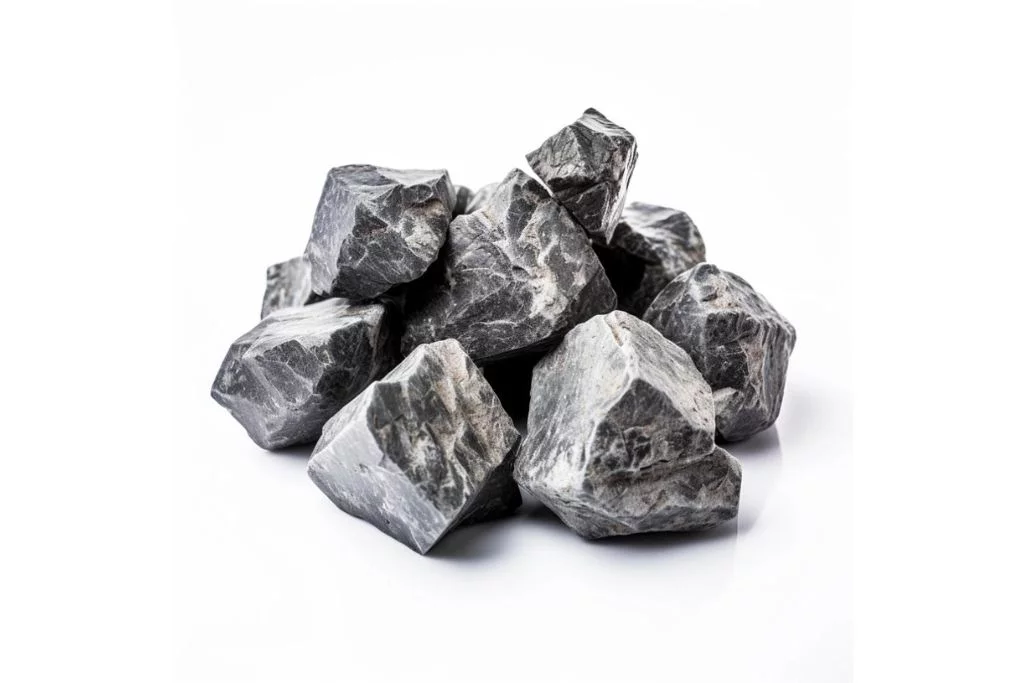Physical Appearance of Anorthosite
Anorthosite is a distinctive igneous rock with a striking appearance that sets it apart from other geological formations. This coarse-grained intrusive rock typically exhibits a light-colored facade, ranging from white to pale gray or even light blue in some instances. The predominant mineral in anorthosite is plagioclase feldspar, which gives the rock its characteristic light hue.
Crystal Structure
The crystal structure of anorthosite is one of its most notable features. It is composed primarily of large, interlocking plagioclase crystals, often visible to the naked eye. These crystals can range from a few millimeters to several centimeters in size, creating a coarse, granular texture. The interlocking nature of these crystals contributes to the rock’s overall strength and durability.
Unique Characteristics
One of the most striking aspects of anorthosite is its iridescence, known as labradorescence. This optical phenomenon is particularly evident in some varieties, such as the famous Labrador feldspar. When light hits the surface at certain angles, it creates a stunning play of colors, including blues, greens, and golds, reminiscent of the northern lights. This feature makes anorthosite highly prized for decorative and ornamental purposes.
Geological Significance
Anorthosite’s uniqueness extends beyond its appearance. It is relatively rare on Earth but is abundant on the lunar surface, making it of particular interest to planetary geologists. The rock’s composition and structure provide valuable insights into the formation and evolution of both terrestrial and extraterrestrial bodies, contributing to our understanding of planetary processes and the early history of our solar system.
Historical and Cultural Significance of Anorthosite
Anorthosite, a striking igneous rock composed primarily of plagioclase feldspar, has played a significant role in both geological history and human culture. Ancient civilizations, particularly in Scandinavia and North America, used anorthosite in tool-making and as a building material due to its durability and distinctive appearance. In more recent times, anorthosite has gained attention as a potential source of aluminum and other valuable minerals, making it economically important in some regions.
Metaphysical Associations
In the realm of crystal healing and metaphysical practices, anorthosite is believed to possess powerful energetic properties. It is often associated with grounding and stabilizing energies, thought to help balance emotions and promote a sense of calm. Some practitioners claim that anorthosite can enhance intuition and spiritual awareness, making it a valuable tool for meditation and personal growth.
Common Uses and Applications
Anorthosite finds various applications in both traditional and modern contexts. In industry, it serves as a source of aluminum and titanium dioxide, used in the production of ceramics, paints, and other materials. The rock’s durability makes it suitable for construction purposes, particularly in landscaping and decorative stonework. In the metaphysical community, anorthosite is often crafted into jewelry, worry stones, or meditation tools, allowing individuals to harness its perceived energetic benefits throughout their daily lives.
Believed Benefits
Proponents of crystal healing attribute numerous benefits to anorthosite. It is thought to promote emotional balance, reduce stress, and enhance mental clarity. Some believe that working with anorthosite can improve decision-making skills and boost self-confidence. In physical healing, it is sometimes used to address issues related to the skeletal system and to support overall vitality. While these claims lack scientific backing, many individuals report positive experiences when incorporating anorthosite into their wellness routines.

